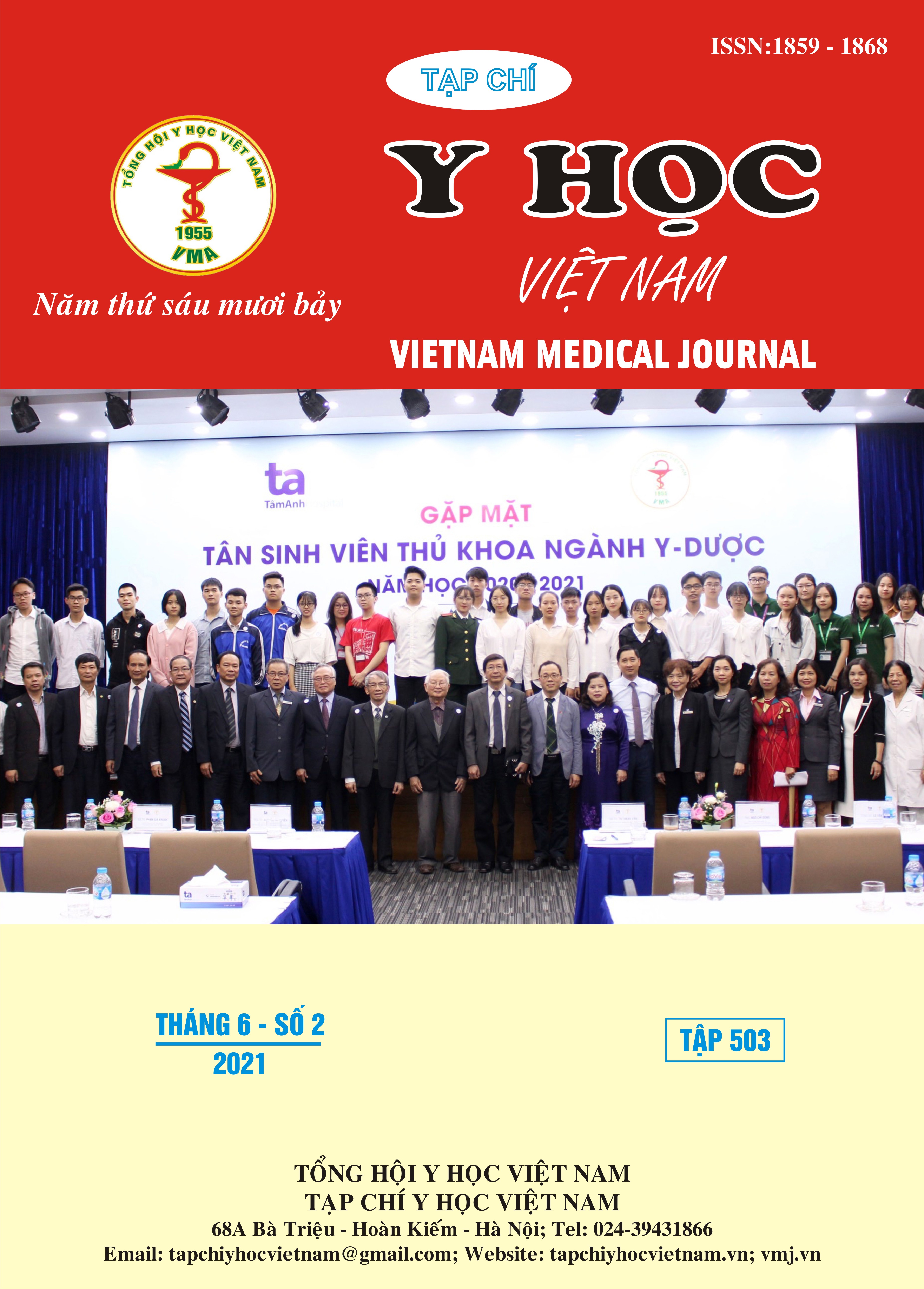CHANGE OF qHBsAg VALUE IN CHRONIC HEPATITIS B PATIENTS TREATED WITH TENOFOVIR DISOPROXIL FUMARATE OR TENOFOVIR ALAFENAMIDE
Main Article Content
Abstract
Objectives: To investigate the change in qHBsAg in chronic HBV patients treated with tenofovir disoproxil fumarate (TDF) or tenofovir alafenamide (TAF). Methods: A descriptive cross-sectional study was conducted on chronic HBV outpatients treated with TDF 300mg or TAF 25mg at the Hepatitis clinic, Ho Chi Minh City University of Medicine and Pharmacy Hospital from January 2017 to December 2020. The qHBsAg change was evaluated in patients treated with TDF or TAF. Results: There were 250 patients included in this study, of which 160 patients (64%) were treated with TDF and 90 patients (36%) with TAF. The mean duration of treatment in the TDF group was 4.1 years and in the TAF group was 2.5 years. The mean baseline qHBsAg value in TDF group (3.0 ± 0.8 (log10 UI/ml)) was significantly higher than that in TAF group (2.7 ± 0.9), p=0.02. In the TDF-treated group, the mean qHBsAg value at 12 weeks was not significantly different, compared to that at baseline (p = 0.2), but the qHBsAg decreased significantly at 24 weeks (p = 0.02). In the TAF-treated group, the mean qHBsAg value was not significantly diferent at 12 weeks (p = 0.8) and 24 weeks (p = 0.4) compared to baseline one. Conclusion: The study showed that qHBsAg value decreased significantly at 24 weeks during TDF treatment. However, qHBsAg value did not decrease significantly during short-term TAF treatment. More studies with larger sample sizes, multicenters and longer follow-up are needed to evaluate the effectiveness of drugs in the change of qHBsAg.
Article Details
Keywords
qHBsAg, Chronic Hepatitis B, TDF, TAF
References
2. Hipgrave D B, Nguyen T V, Vu M H, Hoang T L, et al. Hepatitis B infection in rural Vietnam and the implications for a national program of infant immunization. American Journal of Tropical Medicine and Hygiene. 2003; 69(3): 288-294.
3. Gao Y, Li Y, Meng Q, Zhang Z, et al. Serum Hepatitis B Virus DNA, RNA, and HBsAg: Which Correlated Better with Intrahepatic Covalently Closed Circular DNA before and after Nucleos(t)ide Analogue Treatment?. Journal of Clinical Microbiology. 2017; 55(10): 2972-2982.
4. Yang J, Chen J, Ye P, Jin L, et al. HBsAg as an important predictor of HBeAg seroconversion following antiviral treatment for HBeAg-positive chronic hepatitis B patients. Journal of Translational Medicine. 2014; 12: 183.
5. Boglione L, D'Avolio A, Cariti G, Gregori G, et al. Kinetics and prediction of HBsAg loss during therapy with analogues in patients affected by chronic hepatitis B HBeAg negative and genotype D. Liver International. 2013; 33(4): 580-585.
6. Yang N, Feng J, Zhou T, Li Z, et al. Relationship between serum quantitative HBsAg and HBV DNA levels in chronic hepatitis B patients. Journal of Medical Virology. 2018; 90(7): 1240-1245.
7. Lee J H, Kim S J, Ahn S H, Lee J, et al. Correlation between quantitative serum HBsAg and HBV DNA test in Korean patients who showed high level of HbsAg. Journal of Clinical Pathology. 2010; 63 (11): 1027-1031
8. Liu X, Chen J M, Lou J L, Huang Y X, et al. Correlation between hepatitis B virus DNA levels and diagnostic tests for HBsAg, HBeAg, and PreS1-Ag in chronic hepatitis B. Genetics and Molecular Research. 2016; 15(2): 1-9.


